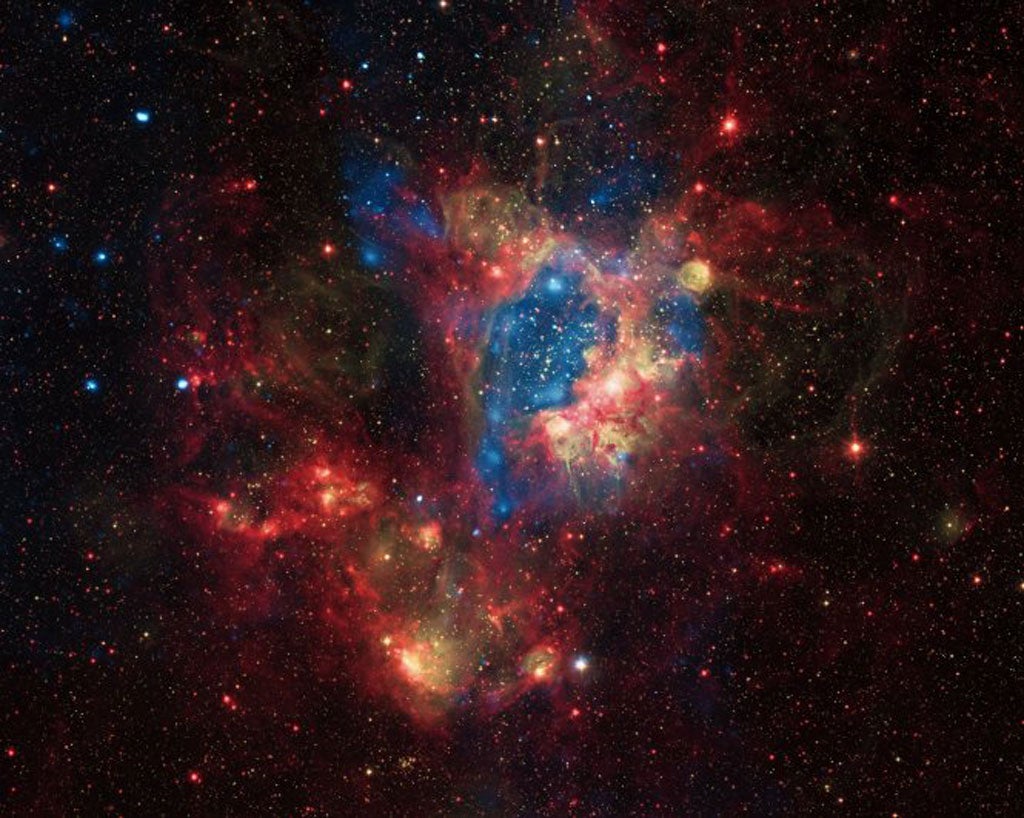The massive stars produce intense radiation, expel matter at high speeds, and race through their evolution to explode as supernovae. The winds and supernova shock waves carve out huge cavities called superbubbles in the surrounding gas. X-rays from NASA’s Chandra X-ray Observatory (blue) show hot regions created by these winds and shocks while infrared data from NASA’s Spitzer Space Telescope (red) outline where the dust and cooler gas are found. The optical light from the 2.2-meter Max Planck European Southern Observatory’s telescope (yellow) in Chile shows where ultraviolet radiation from hot young stars is causing gas in the nebula to glow.
A long-running problem in high-energy astrophysics has been that some superbubbles in the LMC, including N44, give off a lot more X-rays than expected from models of their structure. These models assume that hot X-ray-emitting gas has been produced by winds from massive stars and the remains of several supernovae.
A Chandra study published in 2011 showed that there are two extra sources of N44’s X-ray emission not included in these models: supernova shock waves striking the walls of the cavities and hot material evaporating from the cavity walls. The Chandra observations also show no evidence for an enhancement of elements heavier than hydrogen and helium in the cavities, thus ruling out this possibility as a third explanation for the bright X-ray emission. Only with long observations making full use of the capabilities of Chandra has it now become possible to distinguish between different sources of the X-rays produced by superbubbles.










